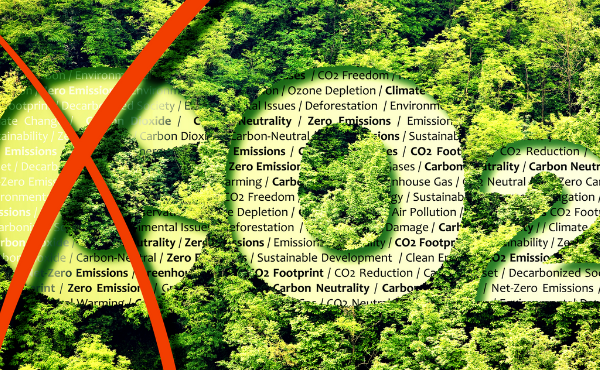The Evolving Role of Greenhouse Gas Emission Offsets: Market Dynamics and Policy Implications

Speaker Announcement: Zachery Halem will present his co-authored paper with Joseph E. Aldy on 'The Evolving Role of Greenhouse Gas Emission Offsets in Combating Climate Change' at the 2024 ECGI Responsible Capitalism Summit on 10 September.
--------------------------------------------------------------------------
Carbon offsets—the financial world’s favourite way to pretend that polluting can be climate-friendly. Like alchemists of old, transforming lead into gold, corporations and governments alike have been striving to transform their carbon footprints into a green, pristine legacy through emission offsets. But while the concept sounds as wholesome as recycling, the execution is often messier than a toddler with a crayon.
This working paper by Joseph E. Aldy and Zachery M. Halem dives deep into the murky waters of greenhouse gas emission offsets. As the world faces increasingly ambitious climate goals, from the European Union’s net-zero by 2050 to Microsoft’s carbon-negative target by 2030, the reliance on these offsets is bound to surge. The paper navigates through the myriad of challenges and opportunities that offsets present, offering a comprehensive review of their evolving role in regulatory compliance and voluntary corporate strategies.
The Promise and Peril of Offsets
Emission offsets are essentially projects designed to reduce or remove greenhouse gases from the atmosphere relative to a business-as-usual scenario. Think planting trees, building wind farms, or improving industrial processes. These projects are often outside the direct control of the entity purchasing the offset, such as in different countries or sectors.
The allure of offsets lies in their potential to provide cost-effective emission reductions and broaden participation in climate action. By allowing firms and governments to meet regulatory or voluntary emission targets, offsets could, in theory, make decarbonization more flexible and less economically painful. Firms are motivated to buy offsets when the cost of these projects is lower than cutting their own emissions.
However, the efficacy of offsets is riddled with challenges. Critics argue that they can act as “greenwashing” tools—more about appearing green than making a substantive impact. The paper highlights issues like additionality (would the project have happened anyway?), permanence (will the carbon stay sequestered?), and leakage (does reducing emissions in one place just cause them to pop up elsewhere?) as key concerns. These factors can significantly undermine the environmental integrity of offset projects.
Regulatory and Voluntary Offsets Markets
Offsets have found a dual home in both regulatory compliance and voluntary markets. In the regulatory sphere, offsets can help firms meet cap-and-trade requirements by providing a cheaper alternative to reducing their own emissions. The California cap-and-trade program is a prime example, where regulated entities can use offsets to comply with emission reduction mandates, though with mixed results. The complexity of ensuring the environmental integrity of these offsets often means they come with high transaction costs and significant scrutiny.
Voluntary markets, on the other hand, are driven by corporate social responsibility and voluntary emission goals. Companies like Microsoft and universities like Harvard are leading the charge, setting ambitious targets and relying on offsets to meet them. The voluntary market is less regulated, which means it’s more susceptible to the pitfalls of “green indulgences” but also ripe for innovation.
Market Dynamics and Financial Innovations
The paper delves into the financial dynamics of the offsets market, which can be as volatile as any other commodity market. Prices for offsets vary widely based on factors like project type, geographic location, and verification standards. This price heterogeneity suggests a segmented market where some buyers opt for cheaper, lower-quality offsets, while others pay a premium for higher-quality, verified offsets.
Financial innovations are emerging to address these challenges. For instance, blockchain technology could enhance the transparency and traceability of offsets, reducing fraud and increasing trust in the market. Tokenizing carbon credits and trading them as non-fungible tokens (NFTs) could also ensure their uniqueness and prevent double-counting.
Moreover, securitizing offsets into bonds, where investor returns are tied to the performance of offset projects, could provide a new way to finance climate action. This approach would shift some of the environmental risk to investors, incentivizing more rigorous project evaluation and monitoring.
Policy Implications
The future of emission offsets is closely tied to the evolution of climate policies. A robust voluntary offsets market could potentially drive support for national carbon pricing policies, as more businesses become involved in decarbonization efforts. Conversely, poorly regulated voluntary markets could undermine the development of stringent climate policies by providing an easy out for emitters.
Disclosure regulations, like those proposed by the Securities and Exchange Commission, could enhance the transparency and credibility of voluntary offsets by setting minimum standards for environmental integrity. Such regulations could also standardize emissions accounting, reducing the risk of double-counting and enhancing market liquidity.
While emission offsets present a tantalizing tool for climate mitigation, their effectiveness hinges on rigorous verification, transparent markets, and supportive policies. The path to a greener future may well be paved with offsets, but without careful oversight and innovation, it risks becoming a road to nowhere.
----------------------
Zachery Halem is a Director of the Lazard Climate Center, leading efforts to provide data-driven insights to business leaders and policymakers addressing the evolving risks of climate change across global sectors. His research and areas of interest are in greenhouse gas emission offsets, focusing on their role in regulatory compliance, incentives, market dynamics, governance, innovations, and policy evolution.
Read more:
- Access the paper here.
- Submit questions for the authors here.
- Register to join us in Berlin on 10th September.


